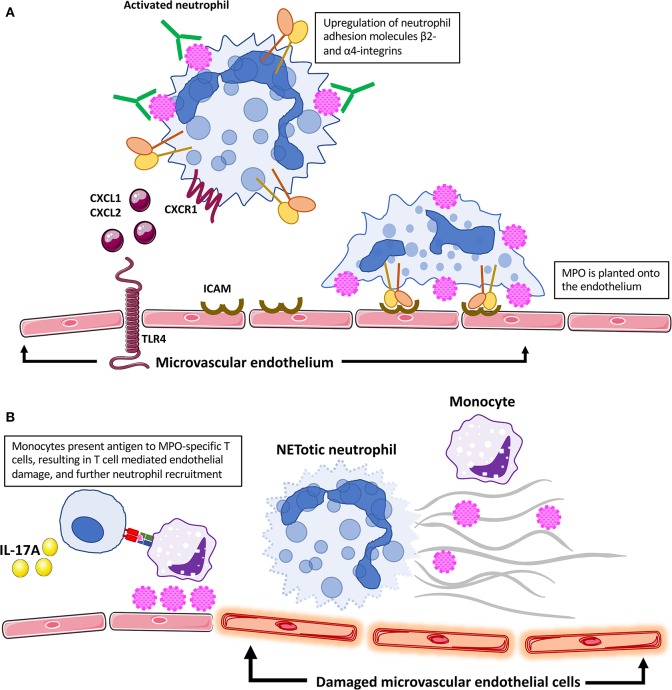Figure 3.
Features of neutrophil migration and adhesion, and endothelial damage as defined by animal models. (A) Activated neutrophils migrate to vulnerable vascular beds, including the glomerulus. The presence of TNF is associated with TLR4 upregulation on glomerular endothelial cells, which contributes to neutrophil migration through production of chemoattractants CXCL1 and CXCL2. After activation by ANCA, neutrophils express β2-integrins (LFA-1 and MAC-1), which enhance neutrophil adhesion to the glomerular endothelium. Neutrophil retention within the glomerular capillaries is moderated by the C5a receptor. (B) MPO is planted onto the glomerular endothelium, allowing local recognition by MPO-specific effector T cells and subsequent injury. Circulating monocytes have been shown experimentally to present antigens within glomeruli; however, microvascular endothelial cells and dendritic cells may also be involved in antigen recognition by effector T cells. Release of interleukin-17A (IL-17A) by T cells further encourages neutrophil migration. After localization to vulnerable vascular beds, neutrophils undergo necroptosis, and form neutrophil extracellular traps (NETs). This process promotes complement activation, and subsequent endothelial damage. Furthermore, NETs facilitate MPO presentation and propagation of the autoimmune response.

